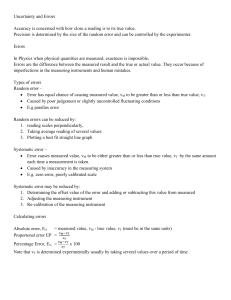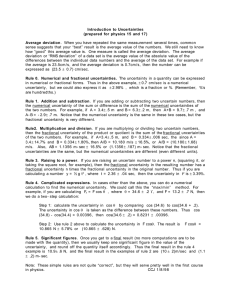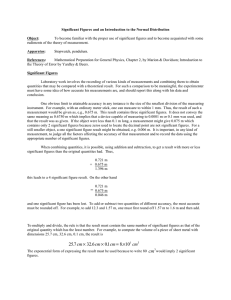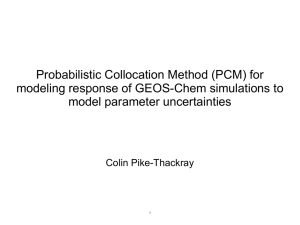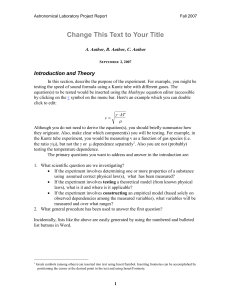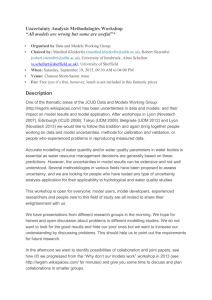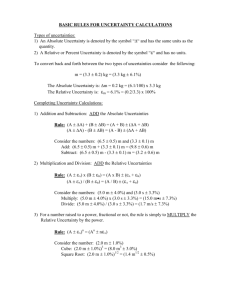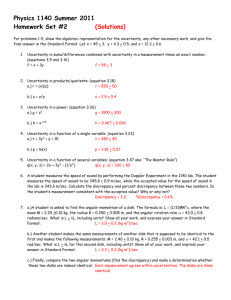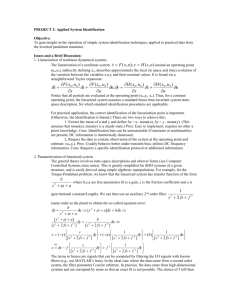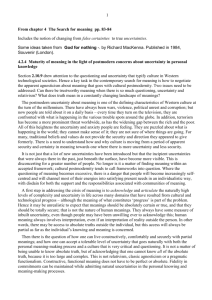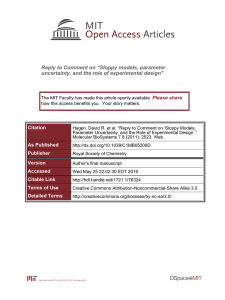Questions to address in Lab Report
advertisement
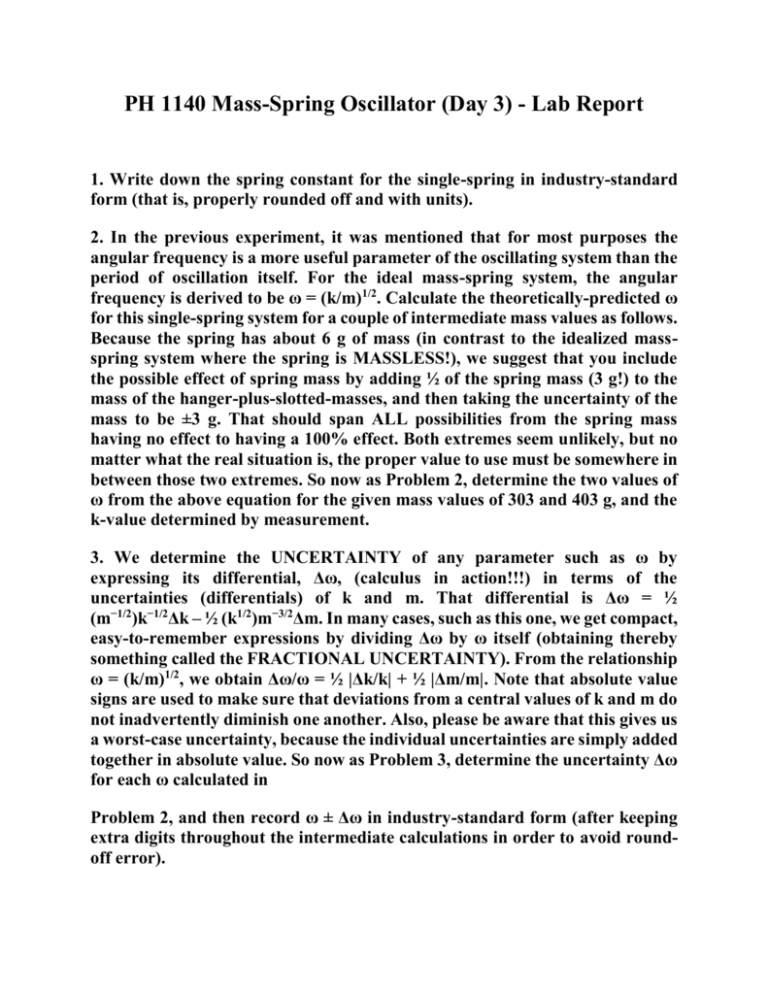
PH 1140 Mass-Spring Oscillator (Day 3) - Lab Report 1. Write down the spring constant for the single-spring in industry-standard form (that is, properly rounded off and with units). 2. In the previous experiment, it was mentioned that for most purposes the angular frequency is a more useful parameter of the oscillating system than the period of oscillation itself. For the ideal mass-spring system, the angular frequency is derived to be ω = (k/m)1/2. Calculate the theoretically-predicted ω for this single-spring system for a couple of intermediate mass values as follows. Because the spring has about 6 g of mass (in contrast to the idealized massspring system where the spring is MASSLESS!), we suggest that you include the possible effect of spring mass by adding ½ of the spring mass (3 g!) to the mass of the hanger-plus-slotted-masses, and then taking the uncertainty of the mass to be ±3 g. That should span ALL possibilities from the spring mass having no effect to having a 100% effect. Both extremes seem unlikely, but no matter what the real situation is, the proper value to use must be somewhere in between those two extremes. So now as Problem 2, determine the two values of ω from the above equation for the given mass values of 303 and 403 g, and the k-value determined by measurement. 3. We determine the UNCERTAINTY of any parameter such as ω by expressing its differential, Δω, (calculus in action!!!) in terms of the uncertainties (differentials) of k and m. That differential is Δω = ½ (m−1/2)k−1/2Δk – ½ (k1/2)m−3/2Δm. In many cases, such as this one, we get compact, easy-to-remember expressions by dividing Δω by ω itself (obtaining thereby something called the FRACTIONAL UNCERTAINTY). From the relationship ω = (k/m)1/2, we obtain Δω/ω = ½ |Δk/k| + ½ |Δm/m|. Note that absolute value signs are used to make sure that deviations from a central values of k and m do not inadvertently diminish one another. Also, please be aware that this gives us a worst-case uncertainty, because the individual uncertainties are simply added together in absolute value. So now as Problem 3, determine the uncertainty Δω for each ω calculated in Problem 2, and then record ω ± Δω in industry-standard form (after keeping extra digits throughout the intermediate calculations in order to avoid roundoff error). 4. Compare the “B” quantities with the predicted ω for m = 303 g from Problem 2, and report the comparison here in terms of fractional deviation. 5. Now compare amplitude relationships. In theory, ωAx = Av, where ω is given by the “B” parameter (the subscript on the A’s indicates which amplitude, or “A” value, to use). Calculate the fractional deviation from theoretical prediction as |Av − ωAx|/Av. Do the same thing for ω2Ax = Aa, and AF = mAa. Generally, the fractional deviations will be under 2% (which is VERY GOOD!!!) and in one case may be as large as 5% (do you know why that is?). 6. Now examine the relatives phases (the “C” parameters, which are reported in units of RADIANS) between the three pairs of parameters: position and velocity, velocity and acceleration, and position and acceleration. First, determine the absolute difference |Cx − Cv| and convert that radian measure to an angle measured in a fraction of π. Then do the same for |Cv − Ca| and |Cx − Ca|, recording results as the answer to this Problem. Also as part of the answer to this problem, find the pair of graphs (now including Fx(t) as well) that are basically IN phase with one another. (Relative phase is probably the single most difficult concept for students in PH 1140 to comprehend. We hope that this visual display of 4 graphs associated with the oscillations of a mass-spring system, combined with the above calculations, help in demystifying the concept of relative phase.)
